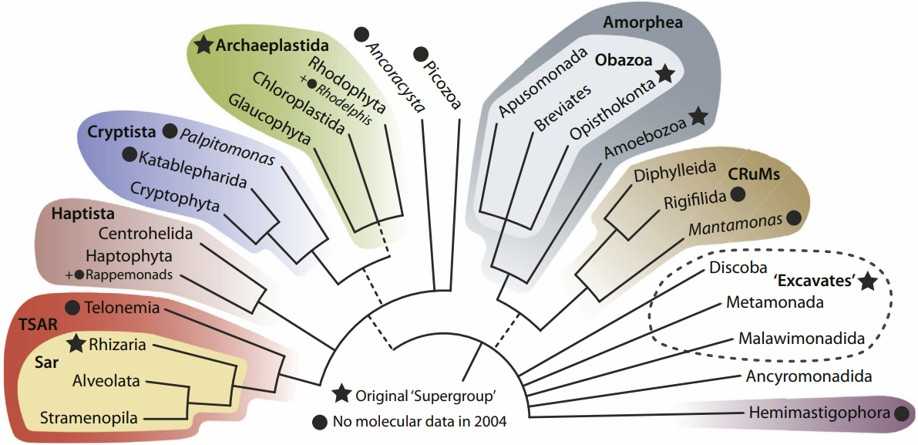Biological Research
Biology has been focused on model organism-based approaches for years. However, understanding biological processes from an evolutionary perspective, especially older and more fundamental cellular processes such as photosynthesis or primary cellular metabolism, is a more comprehensive way of thinking about scientific research. Algae, a polyphyletic group, can be used as model organisms for the study of multiple biological activities from an evolutionary perspective.
 Fig.1 The tree of eukaryotes. (Burki F., et al., 2020, Trends in ecology & evolution)
Fig.1 The tree of eukaryotes. (Burki F., et al., 2020, Trends in ecology & evolution)
Essential Factors as Model Organisms
As one kind of model organism, algae have many advantages and unique features compared with other plants and microorganisms.
 Easy to Culture and Maintain
Easy to Culture and Maintain
The model organism should be easy to cultivate and maintain under laboratory conditions. Most algal strains can be cultured at low cost because only water, macro- and micro-nutrients, vitamins, and light are required.
 Known Life Cycle
Known Life Cycle
The life cycles of some algae strains are well-known and are controllable in vitro in order to obtain all developmental stages and cell types in the experiment.
 Culture Under Axenic Conditions
Culture Under Axenic Conditions
Unlike seed plants, culture under axenic conditions is critical for microalgal model organisms. A standard culture under axenic conditions needs to be set up as a control to avoid potential influences from other microorganisms in the experiment.
 Available Genetic and Transcriptomic Information
Available Genetic and Transcriptomic Information
Genome-scale sequence information and transcriptomic datasets of algal model organisms are studied, which are essential to gain insight into evolutionary questions and cellular phenomena and can also be used for functional genetic analysis.
 Available Genetic Engineering Tools
Available Genetic Engineering Tools
Molecular tools capable of genetic transformation and genetic manipulation of algal model organisms are prerequisites for reverse genetic studies and a detailed understanding of molecular and cellular biological features.
Algae as Model Organisms
Many different species of algae meet the above requirements for the selection of model organisms and are used as model organisms in a variety of fields of biological research, including but not limited to the following strains.
Multiple Research Areas
Research on model algae has been extensive, focusing on photosynthesis, other metabolic and physiological processes, and multicellular evolution.
- Photosynthesis
Primary algae are a major component of many marine phytoplankton ecosystems and exhibit many primitive characteristics. Therefore, they are considered a basal group of the green strain. In addition to the obvious benefits of photosynthesis as a source of energy for cellular processes, photosynthetic cells must cope with the risks associated with absorbing too much light, which can lead to oxidative damage to the cell. - Other Metabolic Pathways
Some algae exhibit unusual metabolic systems due to the retention of distinct metabolic genomes during their long evolutionary history. An interesting example is the discovery of diatoms of the urea cycle, a metabolic pathway that exists in animals but has been lost in green plants and algae. - Evolution of Complex Multicellularity
Some algae have evolved to become complex multicellular organisms of the body type. This is a rare feature among eukaryotes, and only a few eukaryotic groups exhibit complex multicellularity. Therefore, the genomes and transcriptomes of multicellular algae are of particular interest as a means of studying the molecular basis of this phenomenon.
Our Services
With professional equipment and experienced teams, Lifeasible can provide high-quality algae isolation and culture services, algae engineering services, algae analysis services, algae genetic screening services, algae-based production services, algae monitoring services, algae treatment services, and algae-based biosensor services for environmental monitoring. Please contact us for more information.
Reference
- Burki F, Roger AJ, Brown MW, Simpson AG. The new tree of eukaryotes. Trends in ecology & evolution. 2020 Jan 1;35(1):43-55.
Our services are for research use only and not for any clinical use.